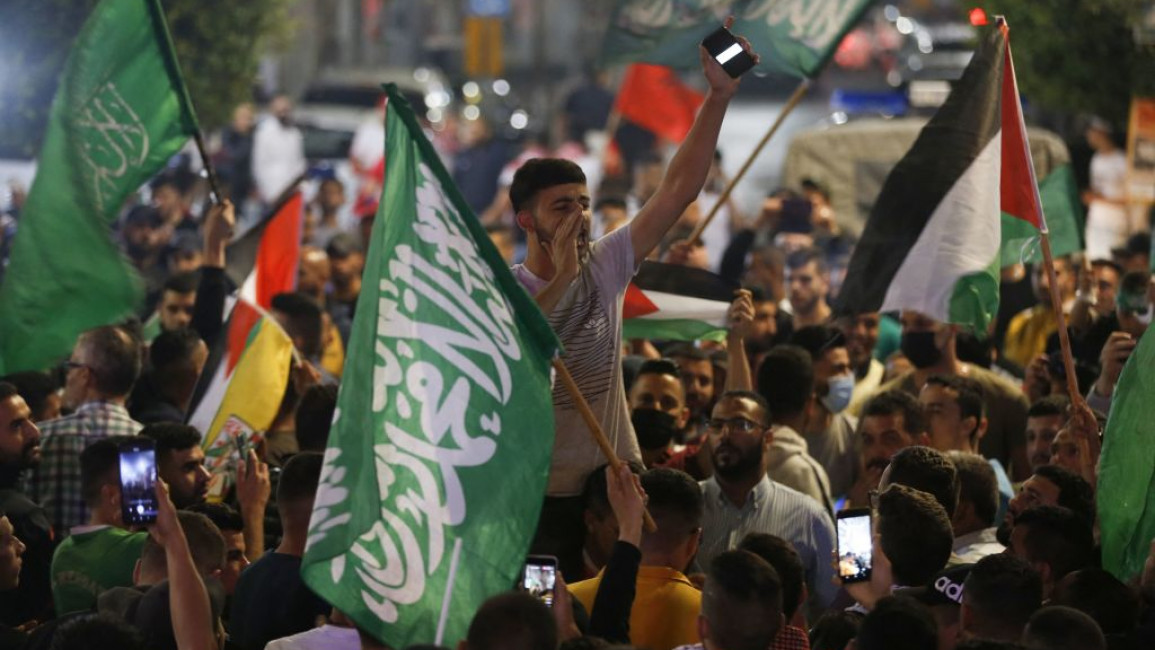Gaza ceasefire: Behind the scenes of Israel-Hamas truce
After drawn-out negotiations to end Israeli attacks on the Gaza Strip, Israel and Hamas agreed on Thursday to a ceasefire from dawn on Friday.
The Gaza-based Palestinian group's agreement came on condition that Israel cease its aggression in occupied Jerusalem, in particular its raids on the Al-Aqsa Mosque and Sheikh Jarrah. Hamas also reserved the right to respond to any Israeli attempts to expel Palestinian families from the East Jerusalem neighbourhood.
Palestinian witnesses to the negotiations revealed to The New Arab’s Arabic-language service that discussions had revolved around the fact that Israel had wanted the ceasefire to be initiated by Hamas. The Palestinian faction reportedly rejected this, according to the sources, who added that intermediaries had therefore worked to ensure that the ceasefire would be announced by both sides simultaneously.
On the matter of occupied Jerusalem, the sources confirmed that Hamas had insisted on maintaining the right to respond in line with developments on the ground. While the agreement dealt only with the ceasefire, there were still many subjects which needed further discussion, like the reconstruction of Gaza.
According to the sources, Hamas had refused to cede any ground on their conditions that Israel end its aggression in Jerusalem, Sheikh Jarrah and the Al-Aqsa Mosque, and made it absolutely clear that if Israel violated these conditions the ceasefire would be nullified. It was also revealed that the mediation efforts around securing the ceasefire were led by Egypt and Qatar, in addition to UN representatives.
Egyptian sources mentioned also that the current de-escalation was temporary and limited to three days, during which a permanent truce could be agreed.
Sources from the Hamas leadership have also indicated that they had demanded further conditions whilst negotiating the truce. These conditions concerned the reconstruction of Gaza and the establishment of mechanisms to compensate those affected by the destruction of large residential and office tower blocks, in addition to prioritising the owners of these buildings for compensation. Hamas also demanded that Israel stop blocking the entry of construction materials to Gaza due to the massive destruction which has been wreaked on the enclave.
The Friday truce was celebrated by many #Palestinians, despite 232 being killed in #Gaza, including 65 children. 👇 #GazaUnderAttack #Israelhttps://t.co/CCnRtOE4TI
— The New Arab (@The_NewArab) May 21, 2021
In response to Israeli claims that the areas targeted were those where rockets were stockpiled, the Hamas sources responded that if that were the case, "we would have seen huge explosions as a result of the explosive materials in those rockets”. For Hamas, this confirmed Israel’s desperation to justify its bombing of densely populated residential areas in order to push the Gazan people into rejecting Hamas, in addition to intelligence failures in the Israeli army.
They added that Israel had made many attempts to gain a military advantage through use of collaborators, but that eight of these agents had been arrested on the fifth day of fighting, due to the intelligence of the resistance factions.
It was further explained that Hamas leaders and personnel were safe despite Israel’s attempts to trick some of them into revealing their whereabout by bombing their homes and attempting to intercept their communications. This was the case with Yahya Sinwar, head of the political wing of Hamas, and Khalil al-Hayya, a senior Hamas official. However, these attempts failed.
"The intelligence capabilities of Hamas have achieved multiple successes during the recent instance of Israeli aggression, for instance through hacking the personal phones of Israeli army officials and other military hardware"
It was emphasised that Hamas and the resistance movement of today is not like it was in the past – now it resembles an actual army, capable of defending its people and inflicting more damage on Israel.
“The intelligence capabilities of Hamas have achieved multiple successes during the recent instance of Israeli aggression, for instance through hacking the personal phones of Israeli army officials and other military hardware, which enabled the military wing to pinpoint targets with added precision and at times revealed Israeli plans of attack, allowing preparations to be made,” the sources said.
Egyptian sources involved in the mediation efforts revealed that during the last 11 days, Israel came close to calling for a ceasefire on two occasions. The first time was when a six-hour pause and effective ceasefire was requested by Israel in order to respond to Egypt’s proposal for a truce. It was suspected by some that in fact Israel hoped to launch a surprise offensive following the pause – but this did not happen due to the rejection of the request by Hamas.
These sources also revealed that during their discussions with the Egyptian security delegation which visited Tel Aviv last Monday, Israeli security officials had alluded to Egypt’s responsibility for the number of rockets and explosives which had managed to enter Gaza during the last few years despite the blockade. Although these observations were not accusatory, they highlighted a need for stronger monitoring of the Sinai-Gaza border.
Appreciation for Egypt’s role in brokering the ceasefire was also made clear in a phone call made by US President Biden to Egyptian President Abdel Fattah al-Sisi on Thursday evening, according to the Egyptian president’s office.



